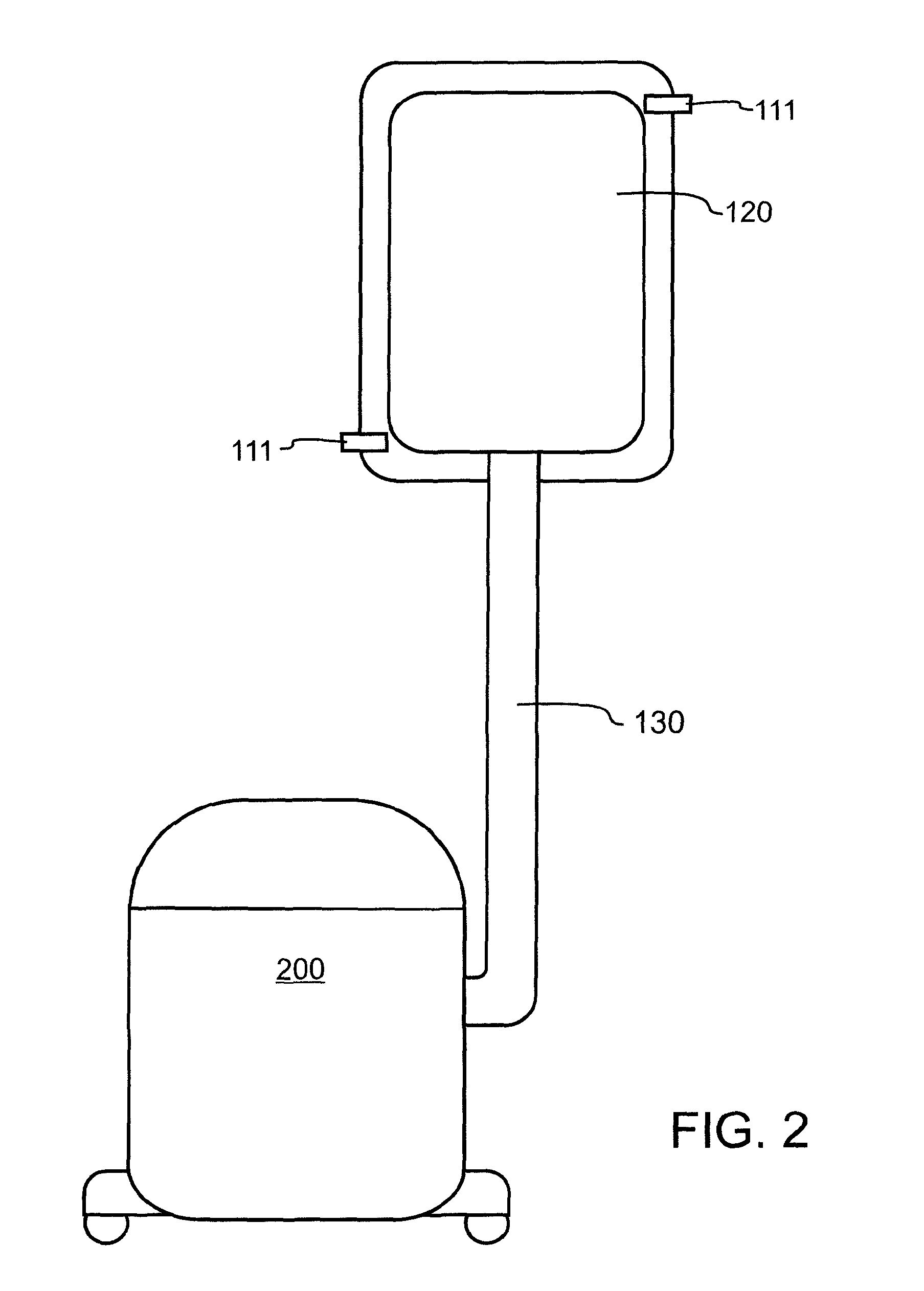Distributed vacuum debris collector
a vacuum and debris collector technology, applied in the field of dust collection, can solve the problems of premature unusable airborne particulates, and affecting the effective capture area of the collector, so as to enhance the capture of airborne particulates, failure of tools, and reduce the effect of aging
- Summary
- Abstract
- Description
- Claims
- Application Information
AI Technical Summary
Benefits of technology
Problems solved by technology
Method used
Image
Examples
Embodiment Construction
[0032]Manifested in the preferred embodiment, the present invention provides a readily transportable distributed vacuum debris collector 10. In a most preferred embodiment of the invention illustrated in FIGS. 1 and 2, distributed vacuum debris collector 10 is comprised of interlocking containers 110, 120 with inlet suction holes 112, 114, 116, 118 attached to a vacuum or suctioning device 200 via attachment arm 130. Suctioning device 200 may be any suitable source of vacuum or suction, and so for exemplary purposes, but not solely limited thereto, portable vacuum cleaners, central vacuum systems, vacuum fans or blowers, or any other suitable source which will draw sufficient volume and vacuum pressure may be incorporated. While not critical to proper operation, in preferred embodiment distributed vacuum debris collector 10 the attachment arm 130 is rigid, and angled to extend vertically from suctioning device 200. Where suctioning device 200 is a vacuum cleaner, such as a prior art...
PUM
| Property | Measurement | Unit |
|---|---|---|
| angle | aaaaa | aaaaa |
| density | aaaaa | aaaaa |
| area | aaaaa | aaaaa |
Abstract
Description
Claims
Application Information
 Login to View More
Login to View More - R&D
- Intellectual Property
- Life Sciences
- Materials
- Tech Scout
- Unparalleled Data Quality
- Higher Quality Content
- 60% Fewer Hallucinations
Browse by: Latest US Patents, China's latest patents, Technical Efficacy Thesaurus, Application Domain, Technology Topic, Popular Technical Reports.
© 2025 PatSnap. All rights reserved.Legal|Privacy policy|Modern Slavery Act Transparency Statement|Sitemap|About US| Contact US: help@patsnap.com



